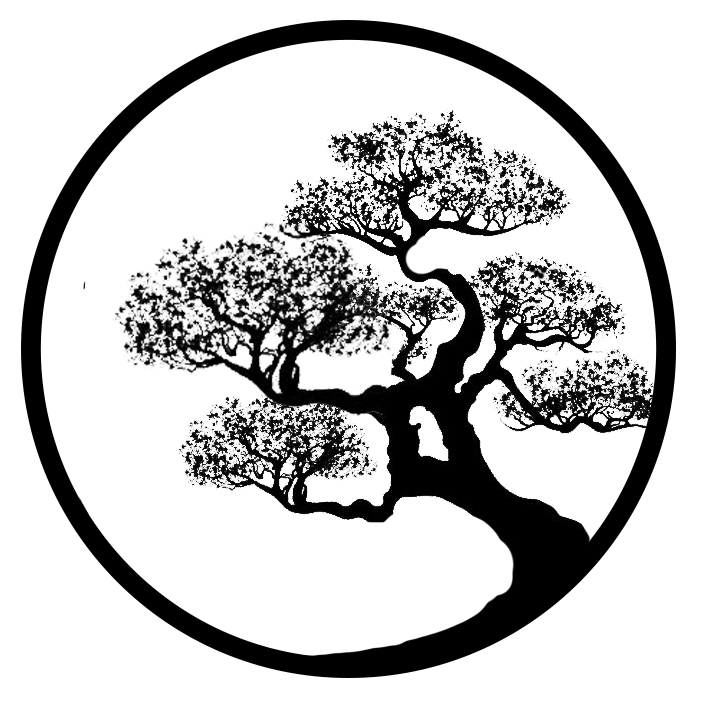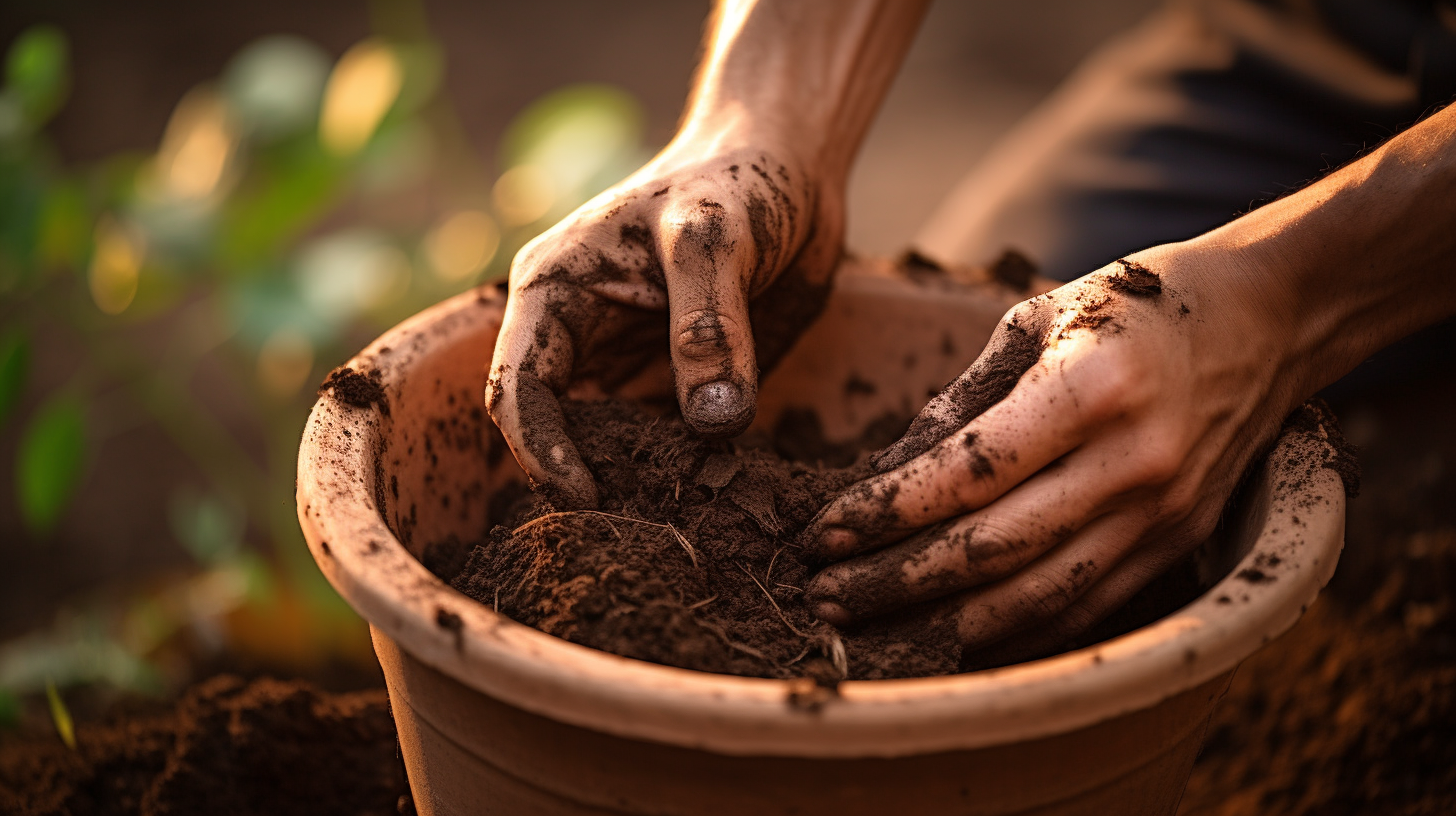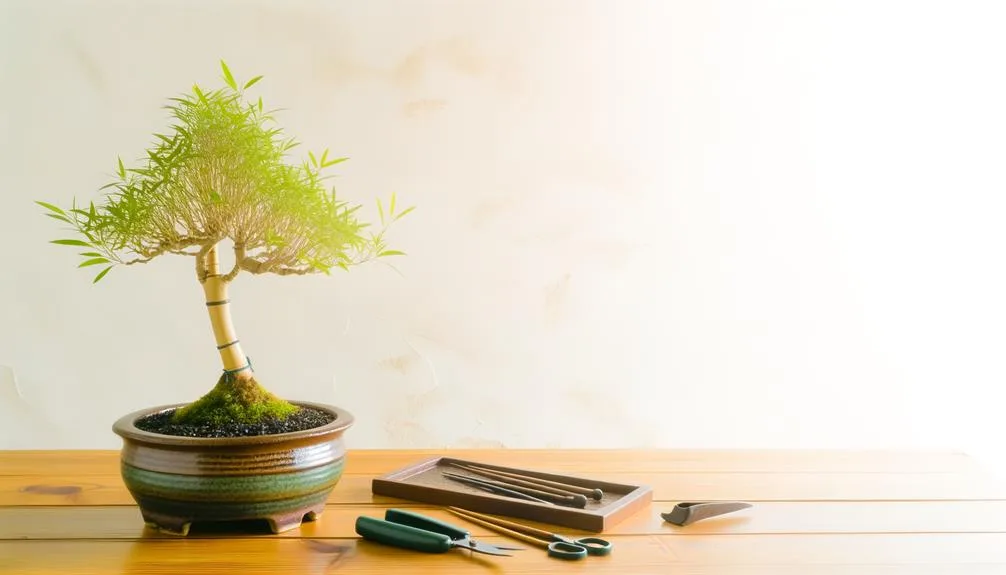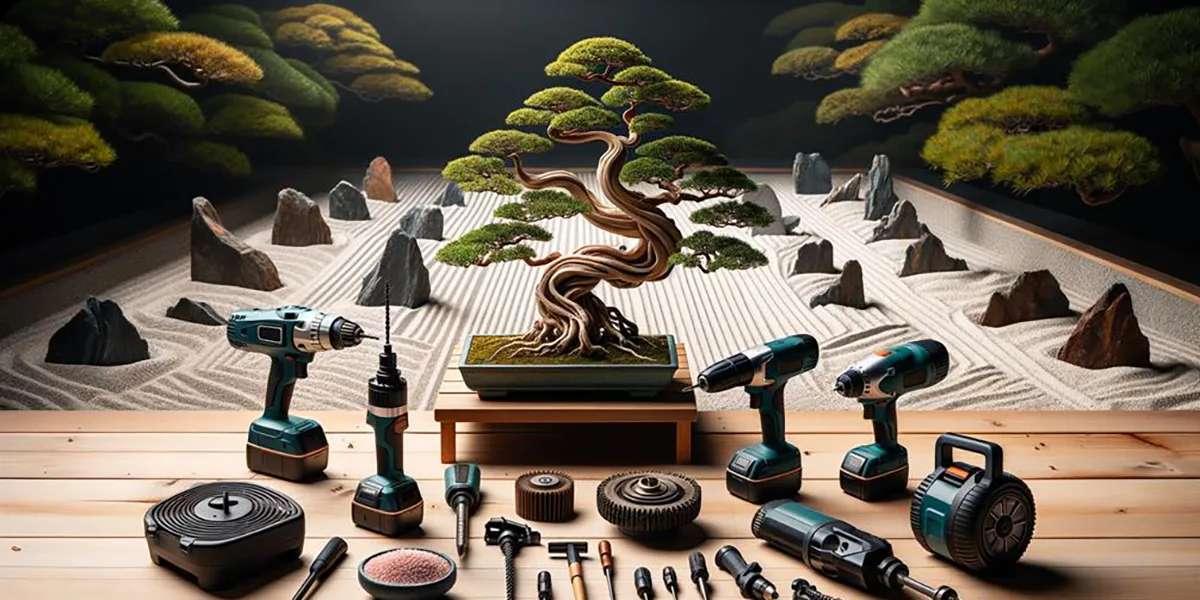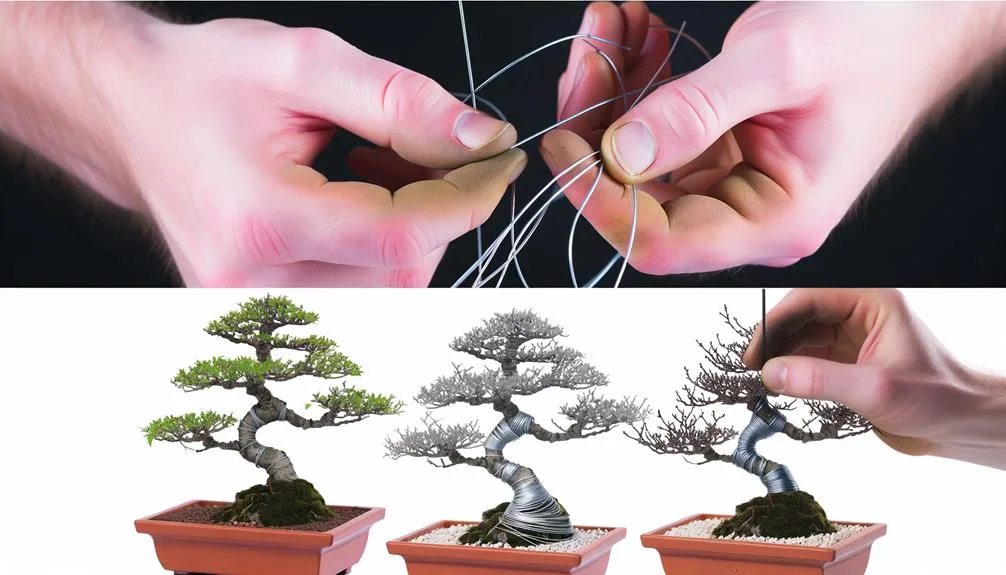Embarking on the journey of Bonsai care, one quickly realizes the pivotal role of Bonsai Soil Mix Composition. This isn’t just about dirt; it’s about creating a foundation that supports life, growth, and the aesthetic essence of Bonsai. The right soil mix is a delicate balance of components like Akadama, Pumice, and Lava Rock, each playing a critical role in the overall health of your Bonsai.
Understanding the nuances of Soil Drainage Techniques and Water Retention Methods is essential. Bonsai trees, with their confined root systems, demand a soil mix that can hold enough moisture to sustain them between watering while allowing excess water to drain swiftly and efficiently. This balance is crucial to prevent root rot and ensure a healthy growth environment.
The organic vs. Inorganic Soil components debate is central to Bonsai soil mix formulation. Organic elements, while rich in nutrients, often retain more water and break down over time, potentially leading to soil compaction. In contrast, inorganic components like Akadama offer excellent drainage and aeration, essential root health and growth factors.
Incorporating Soil Aeration Practices into your Bonsai soil mix is another vital aspect. Aeration ensures roots receive adequate oxygen, which is crucial for respiration and overall health. Techniques for enhancing aeration include adding coarse materials like pumice or lava rock, which create air pockets within the soil.
Climate Adaptation for Soil is an often-overlooked aspect of Bonsai care. The ideal soil mix can vary significantly depending on your local climate conditions. In wetter climates, a blend with better drainage might be necessary. In contrast, a combination with better water retention could be more suitable in dryer areas.
For those who prefer a hands-on approach, DIY Soil Mixing offers the opportunity to tailor your Bonsai soil to your tree’s specific needs. This process involves understanding the unique requirements of your Bonsai species and experimenting with different combinations of soil components to find the perfect mix.
Lastly, considering Bonsai Tree species-specific soil requirements is crucial. Each Bonsai species has unique soil preferences influenced by its natural habitat and growth patterns. For instance, deciduous trees often thrive in a soil mix different from what coniferous or tropical Bonsai would require.
Key Takeaways
- Customized Soil Mixes are Crucial: Tailoring the soil mix to the specific needs of your Bonsai species and local climate conditions is essential for healthy growth.
- Balance of Components: A good Bonsai soil mix typically includes a balance of Akadama, pumice or lava rock, and organic matter, adjusted according to the tree’s needs and environmental factors.
- Importance of Drainage and Aeration: Ensuring proper drainage and aeration in the soil mix prevents root rot and promotes healthy root development.
- Regular Soil Maintenance: Changing the Bonsai soil every one to three years and adjusting the composition is essential for maintaining soil quality and tree health.
- Avoiding Regular Garden Soil: Specialized Bonsai soil mixes are preferable over regular garden soil due to their tailored drainage, aeration, and nutrient properties.
- Monitoring Soil pH: Regularly testing and adjusting the soil pH to meet your Bonsai species’ specific needs can significantly impact its health.
- DIY Soil Mixing: Creating your own Bonsai soil mix allows for greater control and customization, enabling you to address the unique requirements of your Bonsai tree.
- Observation and Adaptation: Continuously observing your Bonsai’s response to the soil and adapting the mix as needed is a crucial part of successful Bonsai cultivation.
Bonsai Soil Composition
The Role of Akadama in Bonsai Soil
Akadama, a naturally occurring, clay-like soil component from Japan, is often considered the backbone of many Bonsai soil mixes. Its unique properties allow it to hold water efficiently while providing excellent drainage. This dual capability makes Akadama an invaluable component, especially for those seeking to balance moisture retention with proper aeration. However, it’s important to note that Akadama can break down over time, necessitating periodic soil changes to maintain optimal soil structure.
For enthusiasts unable to source Akadama or looking for more cost-effective alternatives, materials like Turface or certain types of fired clays can serve as substitutes. While not identical, these alternatives can mimic some of Akadama’s beneficial properties.
Pumice and Lava Rock: Enhancing Drainage and Aeration
Pumice and Lava Rock are two inorganic components often added to Bonsai soil mixes to enhance drainage and aeration. Pumice, with its porous nature, helps retain moisture and nutrients, making them readily available to the roots. On the other hand, Lava Rock provides a more substantial structure to the soil mix, facilitating better air flow and preventing soil compaction. Combining these materials ensures that the roots of the Bonsai are in an environment that promotes healthy growth.
Organic vs. Inorganic Soil Components
The choice between organic and inorganic components in the Bonsai soil mix is crucial. Organic elements, such as bark or leaf mold, can enrich the soil with nutrients and improve water-holding capacity. However, they tend to decompose over time, which can lead to soil compaction and reduced aeration. In contrast, inorganic components like Akadama, Pumice, and Lava Rock provide stability and aeration. Still, they offer little in terms of nutrients. A balanced mix often includes both organic and inorganic materials, providing the benefits of both while mitigating their drawbacks.
In summary, understanding the composition of Bonsai soil is a fundamental aspect of Bonsai care. The right mix of Akadama, Pumice, Lava Rock, and organic components can create an ideal environment for Bonsai trees to thrive. It’s a delicate balance that requires consideration of the tree’s specific needs, as well as the local climate and environmental conditions.
Tailoring Soil Mix to Specific Bonsai Trees
Deciduous Trees: Ideal Soil Composition
Deciduous Bonsai trees, known for their leaf shedding and seasonal changes, require a soil mix supporting their unique growth cycle. An ideal soil composition for these trees typically includes more organic material. This addition ensures a more prosperous nutrient supply, catering to their vigorous growth in the growing season. A mix might consist of Akadama combined with organic compost and some pumice or lava rock to ensure good drainage and aeration. The key is to strike a balance where the soil retains enough moisture to support growth yet drains quickly enough to prevent root rot.
Coniferous and Pine Bonsai: Soil Requirements
Coniferous and Pine Bonsai, on the other hand, have different soil requirements. These trees often prefer a well-draining soil mix, as they are prone to root rot in overly moist conditions. A typical mix for these species includes equal parts Akadama, pumice, and lava rock. This combination provides a stable structure for the roots, adequate drainage, and enough aeration to keep the roots healthy. It’s also crucial to adjust the soil’s pH level to suit these species, as they prefer slightly acidic conditions.
Adapting Soil Mix for Tropical Bonsai
Tropical Bonsai trees, accustomed to a humid environment, require a soil mix that can retain more moisture. A higher proportion of organic material, combined with components like Akadama and pumice, can create a suitable environment for these species. The soil should be able to hold moisture without becoming waterlogged, ensuring the roots receive the hydration they need without the risk of rot.
In conclusion, understanding the specific soil requirements of different Bonsai tree species is crucial for their health and growth. Each species has unique needs, and tailoring the soil mix to meet these requirements can significantly impact the tree’s overall health and aesthetic appeal. Experimentation and adaptation are critical, as the perfect soil mix often comes from understanding and responding to the tree’s needs and the local environmental conditions.
DIY Soil Mixing and Adaptation
Creating Your Own Bonsai Soil Mix
Creating your own soil mix can be a rewarding experience for Bonsai enthusiasts who prefer a more hands-on approach. DIY soil mixing allows for customization to suit the specific needs of your Bonsai tree. Start by understanding the essential components: Akadama for water retention, pumice or lava rock for drainage and aeration, and organic matter for nutrients. The ratio of these components can vary depending on the type of Bonsai and your climate. A typical starting point is a mix of one-third Akadama, one-third pumice, and one-third organic matter. From there, you can adjust the proportions based on how your Bonsai responds.
Adapting Soil Mix to Your Climate
Climate plays a significant role in determining the right soil mix for your Bonsai. In areas with high rainfall, a soil mix with better drainage, such as a higher proportion of pumice or lava rock, is essential to prevent waterlogging. Conversely, increasing the amount of Akadama or organic matter in dry climates can help retain moisture. Pay attention to how your Bonsai responds throughout the seasons and adjust the soil composition as needed. This ongoing adaptation is critical to maintaining a healthy Bonsai.
Experimenting with Soil Components
Don’t be afraid to experiment with different soil components. While Akadama, pumice, and lava rock are popular choices, other materials like fired clay, coarse sand, or even specific types of gravel can be used. The goal is to create a soil mix that balances moisture retention, drainage, and aeration. Remember that your Bonsai needs may change over time, so ongoing observation and adjustment are part of the process.
DIY soil mixing and adaptation are integral to Bonsai care. They allow you to create a customized environment that caters to the specific needs of your Bonsai, taking into account the tree species and local climate conditions. You can develop a soil mix that helps your Bonsai thrive through experimentation and careful observation.
Advanced Bonsai Soil Techniques
Enhancing Soil Drainage and Water Retention
Consider incorporating more inorganic materials like pumice or lava rock to enhance drainage. These materials prevent soil compaction, allowing water to flow through more freely. For improving water retention, especially in drier climates or for species that require more moisture, adding components like Akadama or organic matter can be beneficial. These materials absorb and hold water, releasing it slowly to the roots.
Soil Aeration Practices for Healthy Roots
Regularly loosen the soil surface and incorporate coarse materials like pumice or perlite to prevent compacted soil. This can suffocate roots, hindering their ability to absorb water and nutrients. These additions create air pockets within the soil, promoting oxygen flow to the roots. Additionally, repotting your Bonsai every few years with fresh soil mix can help maintain proper aeration.
Customizing Soil Mix for Specific Needs
Each Bonsai tree is unique, and so are its soil requirements. Pay attention to your tree’s response to different soil mixes and adjust accordingly. For instance, if you notice slow growth or yellowing leaves, it might indicate poor drainage or nutrient deficiency. Experimenting with different ratios of organic and inorganic components can help you find the perfect mix for your specific Bonsai.
Monitoring and Adjusting Soil pH
The soil’s pH level can significantly affect your Bonsai’s health. Some species prefer acidic soil, while others thrive in more neutral or alkaline conditions. Regularly testing the soil pH and adjusting it with additives like sulfur (to lower pH) or lime (to raise pH) can ensure your Bonsai grows in its ideal environment.
In summary, advanced Bonsai soil techniques involve a deep understanding of drainage, aeration, and the specific needs of your Bonsai. Mastering these techniques can create a soil environment that promotes healthy growth and vibrant foliage.
Tailoring Soil Mix for Climate and Species Specifics
Climate Adaptation for Soil
A soil mix with excellent drainage capabilities is essential in regions with high humidity and rainfall. This can be achieved by increasing the proportion of inorganic materials like pumice or lava rock. These materials prevent waterlogging, a common issue in wet climates. Conversely, incorporating more Akadama or organic matter can help retain moisture in arid or dry regions, providing a consistent water supply to the Bonsai roots.
Bonsai Tree Species Specific Soil
Each Bonsai species has unique soil requirements influenced by its natural habitat. For example, tropical Bonsai species often thrive in a soil mix that retains more moisture, reflecting their rainforest origins. In contrast, desert-origin Bonsai species require a well-draining soil mix to mimic their natural dry conditions. Understanding these nuances and tailoring the soil mix to the specific needs of your Bonsai species is crucial for their health and growth.
Adjusting Soil Composition Over Time
As Bonsai trees grow and their environment changes, their soil needs may evolve. Regularly assessing the condition of your Bonsai and its response to the current soil mix can guide necessary adjustments. For instance, as a Bonsai matures, its need for nutrients may increase, requiring more organic matter in the soil mix.
Seasonal Adjustments to Soil Mix
Seasonal changes can also impact the ideal soil composition for your Bonsai. In the growing season, a nutrient-rich soil mix can support vigorous growth. In contrast, a soil mix with less organic matter may be more appropriate in the dormant season to prevent overwatering and root rot.
FAQs
What is the best soil mix for Bonsai trees?
The best soil mix for Bonsai trees depends on the specific species and the local climate. Generally, a mix of Akadama, pumice, and organic matter is a good starting point. Adjust the proportions based on the tree’s needs and environmental conditions.
How often should I change the soil for my Bonsai?
Bonsai soil should typically be changed every one to three years. The frequency depends on the tree species, soil composition, and the rate at which the soil decomposes or compacts.
Can I use regular garden soil for my Bonsai?
Regular garden soil is not recommended for Bonsai as it often needs more drainage and aeration qualities essential for Bonsai’s health. Specialized Bonsai soil mixes are formulated to meet these specific needs.
What is Akadama, and why is it essential for Bonsai soil?
Akadama is a naturally occurring clay-like soil from Japan. It’s prized in Bonsai cultivation for retaining water while providing good drainage. It helps create a balanced environment for Bonsai roots.
How do I adapt my Bonsai soil mix to a humid climate?
In humid climates, increase the proportion of inorganic materials like pumice or lava rock in your soil mix to enhance drainage and prevent waterlogging.
What are the benefits of adding organic matter to Bonsai soil?
Organic matter, such as compost or bark, enriches the soil with nutrients and helps retain moisture. However, it should be balanced with inorganic components to ensure good drainage.
Is it necessary to test the pH of Bonsai soil?
Yes, testing the pH of your Bonsai soil is essential, as different species have specific pH preferences. Adjusting the pH to suit your Bonsai can significantly impact its health.
Can I create my own Bonsai soil mix?
Absolutely! Creating your own Bonsai soil mix allows customization to your tree’s specific needs and local climate. It involves mixing components like Akadama, pumice, lava rock, and organic matter in appropriate ratios.
Conclusion
In the intricate world of Bonsai care, the soil mix plays a foundational role. It’s not just about providing a base for the tree to stand; it’s about creating a living environment that caters to the unique needs of each Bonsai. From the choice of components like Akadama, pumice, and lava rock to the delicate balance of drainage, aeration, and nutrient supply, every aspect of the soil mix contributes to the health and beauty of the Bonsai.
Remember, perfecting your Bonsai soil mix requires continuous learning and adaptation. As your Bonsai grows and responds to its environment, so should your approach to its soil care. Regular observation, adjustment, and a willingness to experiment are crucial to mastering this aspect of Bonsai cultivation.
Whether you’re a seasoned Bonsai enthusiast or a beginner, understanding and respecting the importance of the right soil mix can make a significant difference in your Bonsai’s health. Embrace the process, and enjoy the rewarding experience of nurturing these magnificent miniature trees.
